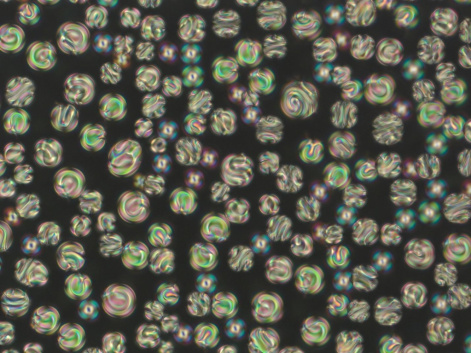Scientists identified the properties of liquid crystals which would allow creating electronic paper
29 May 2020 г.

Scientists were the first in the world to study the orientational structures of cholesteric liquid crystals embedded in a polymer film with conical boundary conditions. The main configurations of the director and the forming defects that determine the electro-optical properties of these materials were identified in such drops. The authors believe that composite materials that can be created on the basis of such liquid crystals, can be widely used in 'smart windows', electronic paper and new generation lasers.
The internal structure of liquid crystals which lacks symmetry is called cholesteric — each layer of molecules is at an angle with respect to the neighboring one, and a result, a spiral forms. They have unique electro-optical properties and in the future, as part of polymer films, can become the basis for "smart windows" which regulate the illumination in a room, as well as ultra-thin electronic paper. For this, the scientists need to thoroughly study the structure of the material and identify the useful features. The authors of the study became the first in the world to conduct a study of the orientational structure of cholesteric liquid crystals and to identify the characteristics providing their unique properties.
In particular, the researchers examined the dependence of the structural properties on the size of liquid crystal droplets in a film. The experiments showed that the droplet diameter is associated with the orientational structure formed by the liquid crystal in a film — it can be twisted or layered. Information on the exact parameters of the formation of different liquid crystal structures is important for the development of composite materials with the required properties which can change their optical properties under the impact of an electric field.
Moreover, it turned out that between these 'extreme' stages there occurs a special transitional structure where the symmetry has already been broken, but no layers have yet developed, and this is one of the discoveries made by the Krasnoyarsk scientists.
The authors of the study believe that the use of technologies such as smart windows or electronic paper will allow people to save natural resources without cutting trees, and will also help reduce energy consumption through smart windows.
Share:
